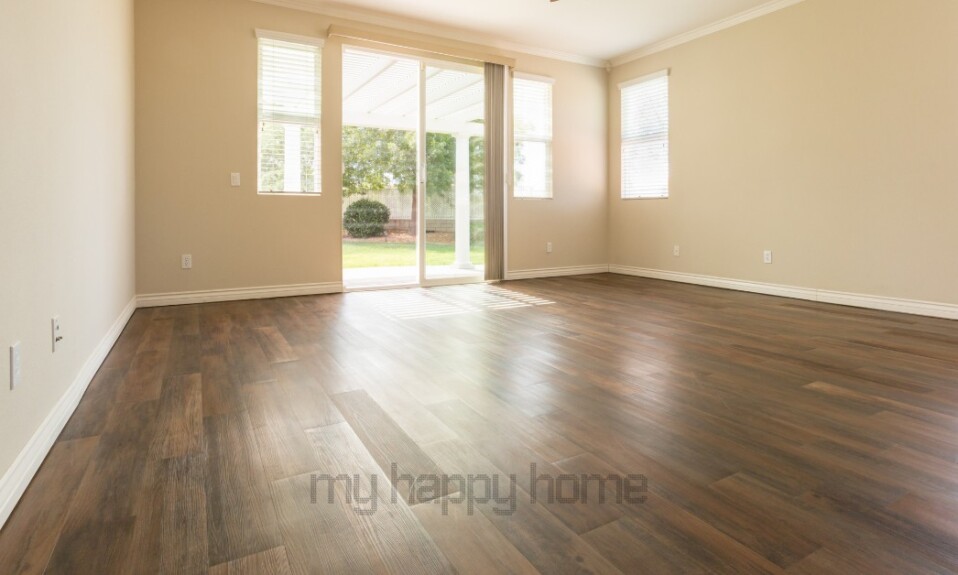
Now that Autumn has arrived, it’s time to start preparing your home for winter. The news has been noting since summer that this winter’s heating bills are going to be anywhere from 10% to 50% higher than last year’s due to changes in the price of oil, natural gas, and electricity. Outside factors such as these can’t be controlled, but how you respond to them can. By preparing your home for winter now, you’ll enjoy lower heating bills as a reward for your efforts.
1. Install a Door Sweep
Any gap in your home that allows the cold winter air to filter will cost you money. Still, the space under your door is often overlooked when preparing for winter. If you haven’t gotten down on the floor lately to check for a gap, there’s likely one there. A door sweep attaches to the bottom of the door and fills the space under it to stop the energy loss. For an added bonus, throw a door cozy down by your outside doors that don’t get opened very often – more insulation never hurts.
2. Install Electric Outlet Sealers
Last winter, as I walked around the house, I was amazed at the cold air pouring in through the electrical outlets on the exterior walls. The latest Lowe’s ad lists a 6-pack of outlet sealers for $1.98. If you have any outlets on exterior walls, adding a bit of weather protection and installing outlet sealers would be a good idea. For 30 minutes worth of work and less than $20 worth of materials, you can gain some significant savings.
3. Caulk Around Doors, Windows, and Baseboards
Just because you don’t see a leak doesn’t mean there isn’t one. You can test for leaks around your house using the “candle method” – turn on all your exhaust fans to decrease the air pressure within your house, then carefully move a lit candle around the edges of all your windows, doors, and exterior floorboards. If the flame on the candle flickers, it signals there’s an air leak costing you money. For less than $10 worth of caulk, you can seal the interior leaks that cost you dearly.
4. Fill Cracks and Holes With Spray Foam
Even though your house looks like a solid block, there are numerous holes cut in your exterior walls to allow for your utilities to enter your home. These holes were cut through the wall and manually filled with packing material and insulation. Since then, this poor seal may have come loose and has left an open gap in your exterior. A $5 can of spray foam can patch up all these holes and give you some bonus insulation.
5. Install Weather Stripping
Not only do the outside of your windows leak, but the inner frame can also. You can buy and install weather stripping on all your windows for just a few dollars and start saving money immediately. By sealing gaps, filling cracks and holes, and installing weather stripping, you can save up to 20% on heating and cooling costs.
6. Change Your Furnace Filter
It can’t be emphasized enough – a dirty furnace filter is stealing your money. By blocking airflow, an old, dirty furnace filter forces the blower to work harder to pull air to move the heat throughout your home. On the other hand, a fresh, clean furnace filter allows the air to move through freely. You should check your filter at least once a month and change it once every 90 days. If you hold it up to the light and can’t see much light passing through, it’s well past its effective lifespan.
7. Have Your Furnace Serviced
Every year, you should have your furnace serviced before you turn it on to ensure it is in top operating condition. Not only will having it serviced keep it operating, but regular service can also take care of efficiency and safety problems before they get out of hand. Corrosion and dust buildup can weaken your furnace’s heating power, and improper installation and ventilation can allow carbon monoxide to build up in your home and silently suffocate you.
8. Install a Programmable Thermostat
A programmable thermostat can save you money year-round. Program it to keep your home in a comfortable temperature range. At the same time, you’re home and awake, and set it to drop the temperature by a few degrees while you’re out of the house or asleep. The more aggressively you reduce your set temperature, the larger savings you’ll realize.
9. Insulate Your Water Heater
If your water heater is more than 10 years old, it likely doesn’t have enough insulation. By wrapping it in a $20 water heater insulating blanket, it will lose less heat and not work as hard to keep your water hot. A small investment in a blanket can pay for itself in energy savings in a few short months.



